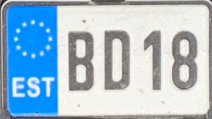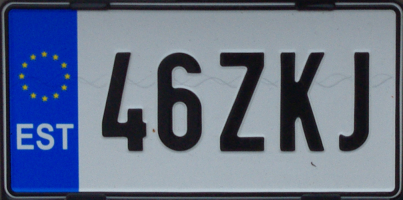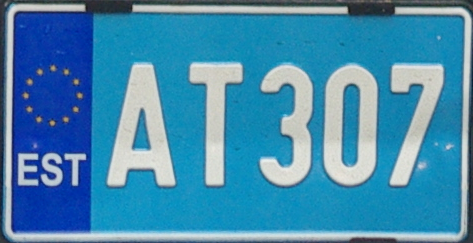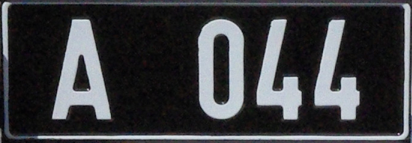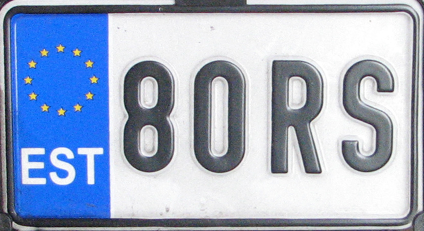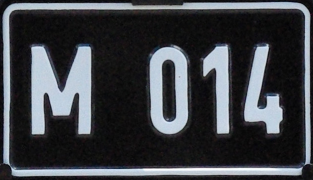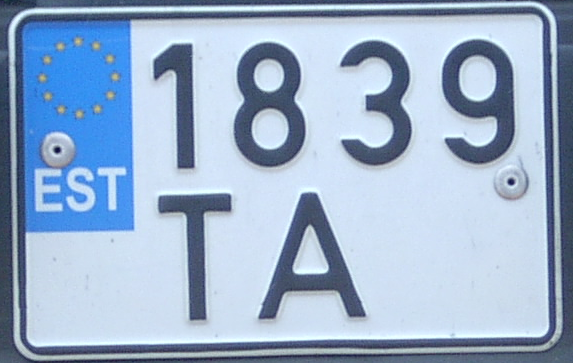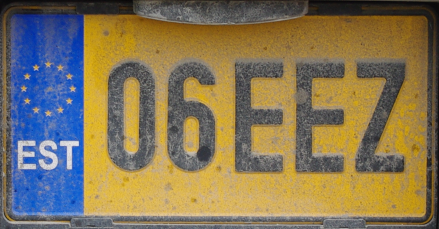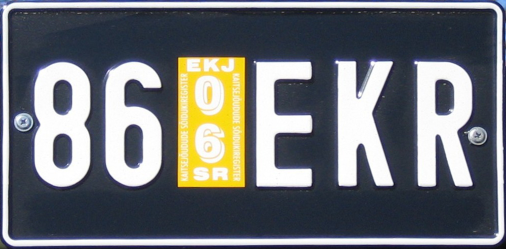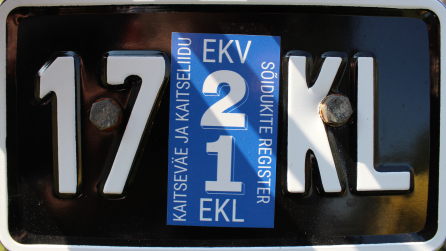
Estonia
(Eesti Vabariik)
Back to home page
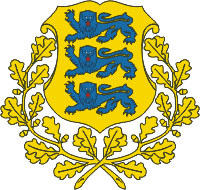
From this part of Platepie page you can find information about historical and current Estonian license plates.
1920-1928 Registration of motor vehicles was the obligation of local municipalities. Every town and county organized the registration procedure independently, therefore various designs, colours and systems existed. One common system was that the plate carried the name of the county or town above or followed by the serial number. The owner had to find also the manufacturer. The city of Tallinn with the largest number of cars had white plates with four black numerals, the rear plate was of larger size. The first two numbers were probably denoting the year of initial registration.
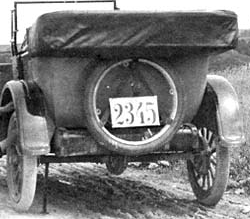

Picture taken from The Estonian Classic Cars Gallery
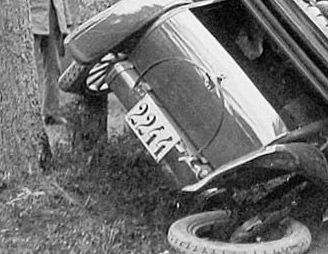
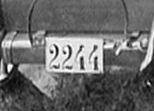
Picture taken from The Estonian Classic Cars Gallery

Picture taken from The Estonian Classic Cars Gallery
1929-1932 - The first Motor Vehicle Act came into force on April 1, 1929. The Provisions for the Implementation of the Motor Vehicle Act standardized the registration procedures across the country and determined the design as well as the system of the registration plates. First license plates issued according to that law had one letter denoting the registration area, a hyphen and up to for numerals. Plates issued since 1929 had white lettering on black.
Plate measures were as follows – height 140 mm, length depended on the number of numerals. For example the A-1234 format was 389x140 mm and format A-234 was 354x140 mm. Motor vehicles were registered and registration plates were issued in 14 municipal governments - 3 towns ( Tallinn, Tartu and Narva) and 11 counties. The area codes allocated for these municipalities were as follows:

J=Järvamaa
Picture taken from The Estonian Classic Cars Gallery
U=Virumaa
Picture taken from The Estonian Classic Cars Gallery
A=Tallinn
Picture taken from The Estonian Classic Cars Gallery
Military plates were issued by Ministry of Defense (Kaitseministeerium) and plates were of the same design but with black characters on white background - letter K followed by hyphen and 3 numerals.
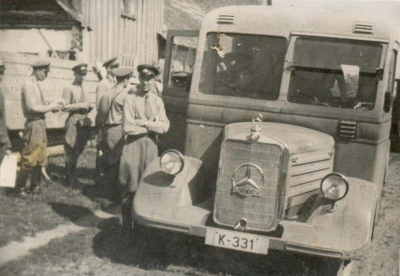
Picture taken from The Estonian Classic Cars Gallery
![]()
President's representative limousine carried the plate A-1.
1933-1937/38 Since 1st of April 1933 Estonian vehicle registration system was improved as follows: last two numbers of the registration year were added to the upper left corner of plates above the yellow seal of the issuing authority. Another major change was that since 1933 Estonian license plate colour changed annually – white on black plates in odd years (1933, 1935, 1937) and black on white plates in even years (1934, 1936, 1938). Characters like provincial code and numerals remained the same every year. Such colour selection could be avoiding possible confusion with Finnish plates although lettering design was different.
In 1930 - 3 years before introduction of improved Estonian system- Finland (Estonia's neighbour country) - introduced annual plates which were in odd years black on white, even years the reverse. Those plates had exactly the same characteristics like Estonian 1933-plates: one letter district code (with exception of VA for Vaasa), a hyphen and up to 4 numerals. Also Finnish 1930-plates had last two numbers of registration year at top left corner of the plates.
![]()
![]() Pictures taken from Europlate
Pictures taken from Europlate
Most probably Estonia took over Finnish system from 1930 but I don't have any facts to prove that. 1922-1929 Finland used similar system like Estonia introduced in 1929. Those plates were black on white, one or two letter district code and up to four numerals.
The measures' standard remained the same as before – height 140 mm and length was depending on the number of characters. For example: the format of 36 A-123 was 366 mm long. Still in reality the length requirement was widely ignored probably for practical reasons (too many plate formats). Area codes remained the same. Example photos of these plates:
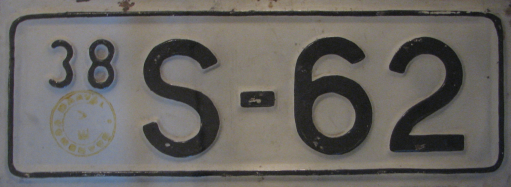

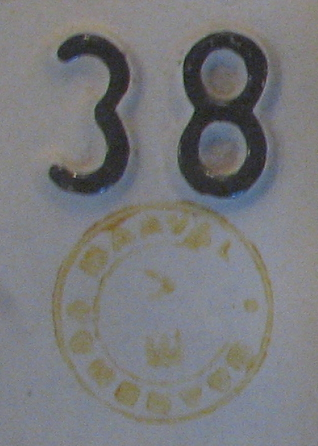
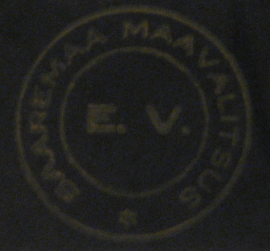



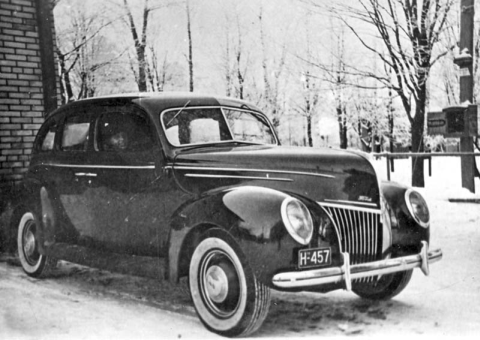

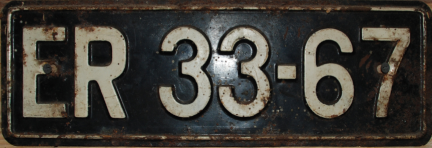
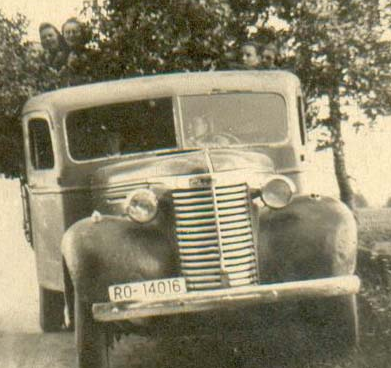




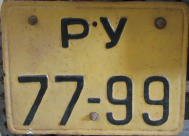

























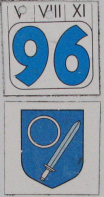




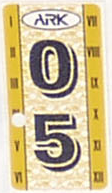
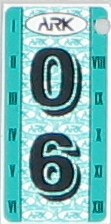
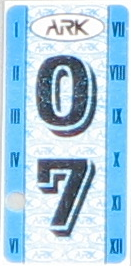

 .
.






 are not issued anymore. Normal series plates introduced for trailers starting from 001 YHA
are not issued anymore. Normal series plates introduced for trailers starting from 001 YHA  .
.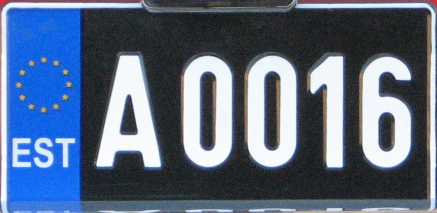 is not issued anymore. Oldtimer plates are issued without Euroband since October 2008.
is not issued anymore. Oldtimer plates are issued without Euroband since October 2008.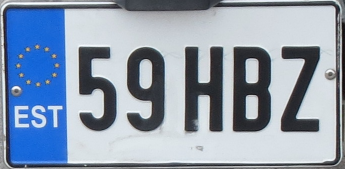 .
.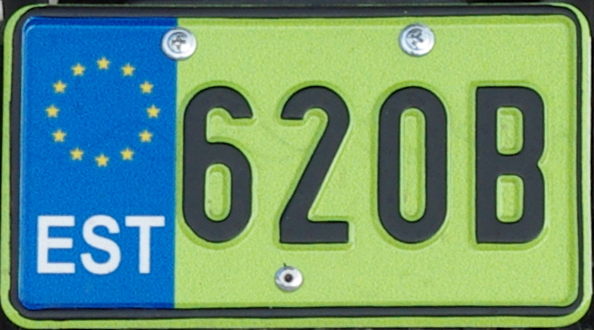 . Competition car plates are white on red. Rear plates are with dimensions 11x52 cm
. Competition car plates are white on red. Rear plates are with dimensions 11x52 cm  . Front plates are usually smaller and adhesive 350x60mm in size
. Front plates are usually smaller and adhesive 350x60mm in size 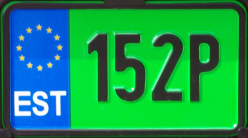 .
.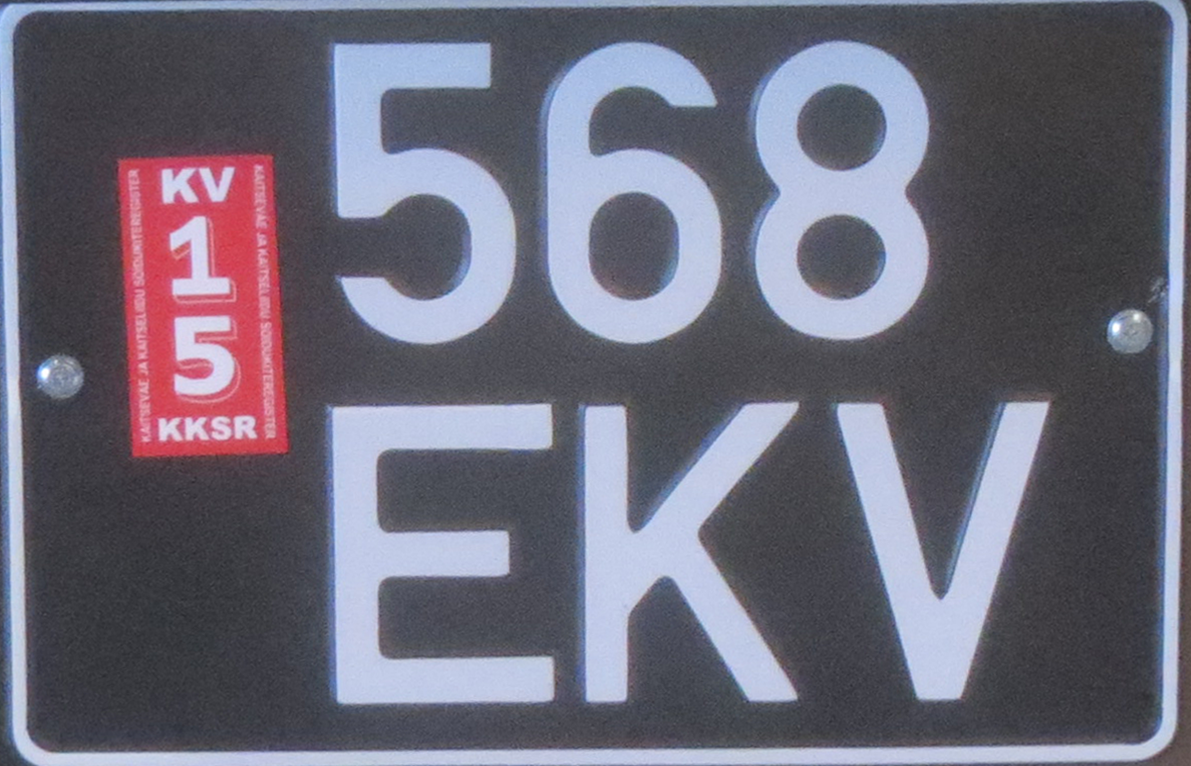 .
. Preproduced stock of earlier series was issued in parallel with random letter combinations. Since October 2019 only random letter combinations are in use. Around the same time (in July 2019) also the plate manufacturer was changed in Estonia. This has impacted appearance of plates which now have somewhat "looser" spacing between the letters:
Preproduced stock of earlier series was issued in parallel with random letter combinations. Since October 2019 only random letter combinations are in use. Around the same time (in July 2019) also the plate manufacturer was changed in Estonia. This has impacted appearance of plates which now have somewhat "looser" spacing between the letters:  For most recent sightings please
For most recent sightings please 


